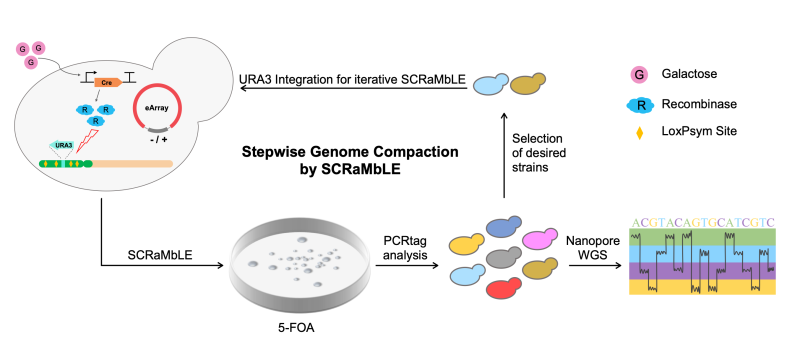Researchers Develop New Method to Revamp and Minimize Yeast Genome
Date:07-01-2021 | 【Print】 【close】
Researchers from the Shenzhen Institutes of Advanced Technology (SIAT) of the Chinese Academy of Sciences developed a method termed SCRaMbLE-based genome compaction (SGC) to revamp and minimize the yeast genome.
They showed that a synthetic chromosome arm (synXIIL) could be efficiently reduced by this method. Their study was published in Genome Biology on Jan 4.
Redundancy is a common feature of genomes, presumably to ensure robust growth under different and changing conditions. Genome compaction removes sequences nonessential for given conditions.
The synthetic chromosome rearrangement and modification by loxP-mediated evolution (SCRaMbLE) system is a unique feature implanted in the synthetic yeast genome (Sc2.0), which has been proposed as an effective tool for genome minimization.
As the Sc2.0 project is about to be completed, the researchers have begun to explore the application of the SCRaMbLE system in genome compaction.
"With SGC, all the strains we identified harbor a reduced synthetic chromosome," said Associate Professor LUO Zhouqing from SIAT, first author of the study. "The nonessential genes located approximate to the essential one could not be removed by SGC directly, if there is no loxP site in between."
The researchers constructed an episomal essential gene array and introduced it prior to activate SCRaMbLE, which enhanced the deletion ability of SGC, not only by removing nonessential genes located close to the essential ones, but also by deleting more chromosomal sequences in a single SGC process.
Further compaction was achieved through iterative SGC, revealing that at least 39 out of 65 nonessential genes in synXIIL can be removed collectively without affecting cell viability at 30°C in rich medium.
"We developed iterative SGC with the aid of eArray as a generic yet effective tool to compact the synthetic yeast genome," said Dr. DAI Junbiao from SIAT, the co-corresponding author of the study.

Figure. Schematic illustration of the SCRaMbLE-based genome compaction (SGC) method (Image by SIAT)
Media Contact:
ZHANG Xiaomin
Email: xm.zhang@siat.ac.cn